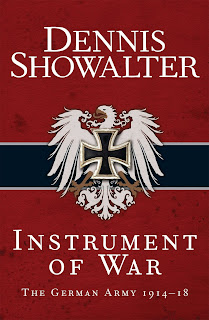Title: The First Day
on the Eastern Front
Author: Craig WH
Luther
ISBN: 978-0-811-73780-7
Publisher: Stackpole
Books
Year: 2019
Hardcover
Pages: 471
Photos/Maps: 60/18
Much has been written
about the German invasion of the Soviet Union, Operation Barbarossa, initiated
22 June, 1941; thus it was with some resignation that I undertook to read yet
another missive on this campaign. To my great surprise and pleasure I found the
work to be engrossing and easily one of the best books that I have read in
recent times.
Luther has undertaken
to present the reader with a comprehensive picture and an in-depth analysis of
the events surrounding the first day of the invasion. He has succeeded in this
endeavour magnificently. Drawing upon a vast array of primary source materials
(war diaries, letters, combat reports) from both the German and Russian
archives, he has crafted a book of extraordinary scope and detail.
He commences his work
with a look at the planning and logistics efforts required to make Barbarossa a
reality. He convincingly dispels the argument that the German attack was in
fact a spoiling engagement against a Soviet intent to invade. Having said that
however, there appears little doubt that Russia was building towards an
ultimate clash with Germany as indicated by their military upgrading. The
efficiency and capacity of the German logistics planning and execution is
neatly captured, as an example of the scope of Luther’s research, by the fact
that over 10,000 trains were coordinated in the move East of the German armies;
all while maintaining the elements of surprise.
He then moves on to a
discussion of each of the three main fronts (North, Central and Southern) as
well as the Air Campaign waged the first day. In every case he seamlessly
transitions between the various levels of command and adds colour to his
narrative through the use of first hand material relevant to the point in
question. While a majority of the discussion is focussed upon the German
perspective, there is ample Soviet reference to provide for a balanced
appreciation. Much of what the author has quoted will resonate with the reader,
especially if they have had any military service. What stands out is the
breathtaking scope and violence of the attack; the author’s use of letters,
diaries and unit war diary entries inject a much more personal scope to his
descriptions.
The author continually
introduces elements of sober reflection into the narrative which add poignancy
to the story. The impact of the attack on the Russian civilians who were caught
in the maelstrom of the German attack, the ferocity of the Russian defence (as
an example, the Luftwaffe lost 78 aircraft the first day, 15 of those due to ramming
by Soviet aircraft), the awe inspiring opening salvo’s by the German artillery
and the descent by both sides, almost immediately, into a level of brutality not
witnessed on any other front serve as but a few examples.
The comprehensive
bibliography and copious endnotes provide for extensive additional research and
reading opportunities. Luther has included numerous maps which he refers to
throughout the text. For the most part these are adequate although some are
difficult to follow. Overall however, this is a superb book, full of new
information that is indicative of the years of research that went into this
work. An excellent reference and addition to anyone’s library.



